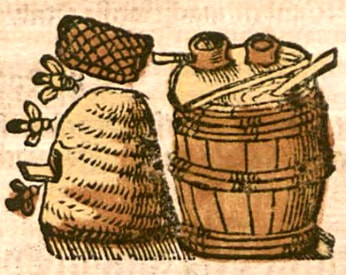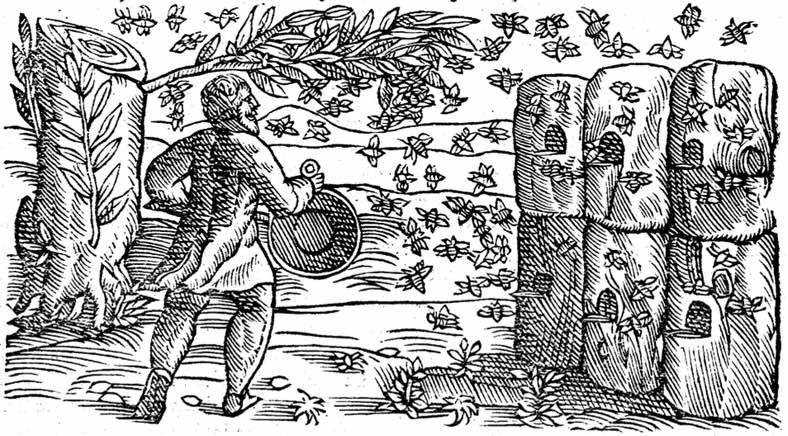Sentry Page Protection
Wax, Cera
La 蜡 (TCM)
Madhuchista (Ayurveda)
Shehad ke chattay ka mom (Unani)
Madhuchista (Ayurveda)
Shehad ke chattay ka mom (Unani)
Krauterbuch, Lonitzer, 1578
Dioscorides Materia Medica, Mathias, 1563
Pharmacetical name:
Cera from Apis, the Bee.
Parts used:
Clarified Beeswax
Temperature & Taste:
"Moderate in temperament" (Avicenna)
Classification:
T. External Medicines
Cera from Apis, the Bee.
Parts used:
Clarified Beeswax
Temperature & Taste:
"Moderate in temperament" (Avicenna)
Classification:
T. External Medicines
Uses:
1. Softens Hardness, Soothes Irritation:
-mildly softening and dissolvent (Avicenna)
-softens hardness of the tendons, ligaments and nerves
-applied to the chest (or licked or taken internally) for "roughness of the chest" (Avicenna)
-prevents coagulation of Milk in nursing mothers. (Avicenna)
-it has been taken internally for Hard Swellings
2. Resists Poison, Stops Leakage:
-"It is said that wax absorbs the poisons" (Avicenna)
-internally Diarrhea and Dysentery with Blood or Mucus
-applied to poison arrow wounds to absorb the poison.
-bleeding during Pregnancy
3. Strengthens the Body:
-prevents Hunger and slows up Senility (TCM)
-regarded as a strengthening tonic for the organs, strengthening the body (TCM, West)
-‘all kinds of Beeswax soften, warm and also regenerate the Human body, fresh wax being the most useful’ (Pliny)
-"Increases Sexual desire" (Avicenna)
-Taken constantly, it was said to lighten the body (old TCM)
4. Used in Pharmacy:
-important for the formation of Ointments and Plasters
-pills covered with melted wax can last much longer.
-it is an effective preservative
5. Externally:
-applied to all type of hardness
-used to fill hollow teeth
-for burns, scalds, fractures and wounds, and is also applied to Frostbite
-The fumes from burning wax was inhaled for coughs and to stop hiccups
Dose:
Used topically in Ointments, Plasters etc.
It has been taken internally by forming into pills the size of millet and taking 10 pills as a dose.
Preparation:
It is heated an strained to remove foreign matter.
Used topically in Ointments, Plasters etc.
It has been taken internally by forming into pills the size of millet and taking 10 pills as a dose.
Preparation:
It is heated an strained to remove foreign matter.
Main Combinations:
Used with Oil (Olive, Sesame etc.) as a basis for Ointments and Plasters
Used with Honey to form an ointment (Ceromel) for Wounds and Ulcers
1. Intestinal Ulcers, take 10 small pills of Wax (the size of a millet seed) with Rice water.
2. Indolent Ulcers, prepare a plaster of Honey with Wax (Ceromel)
3. Lupus, apply a plaster of Honey with Wax (Ceromel)
Major Formulas:
Cautions:
None noted
Main Preparations used:
None noted
Main Preparations used:
Click the Tabs above for more information on this Medicine
Nothing at Present
Chinese researchers isolated 3 blood-lipid lowering compounds from the Beeswax of Apis mellifera and A. cerana


